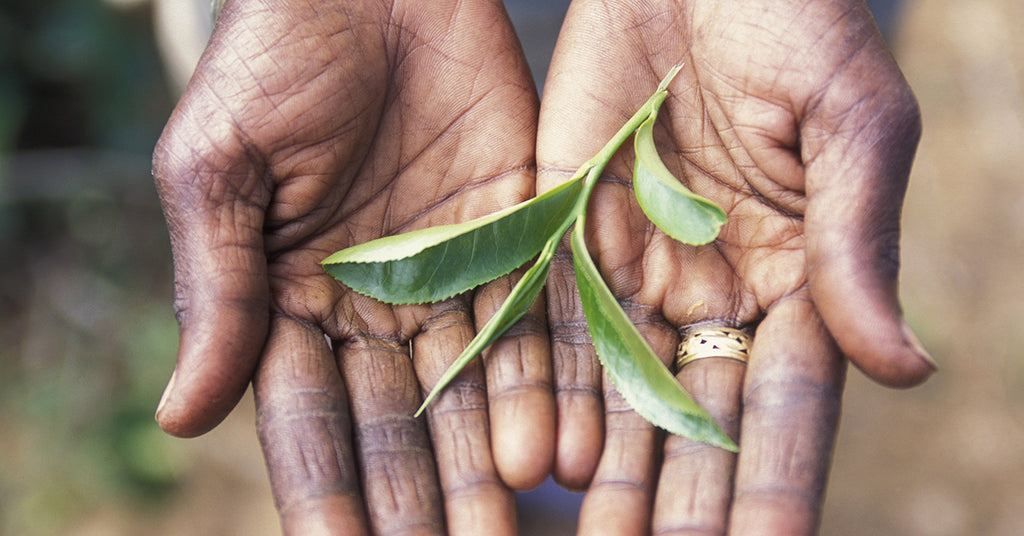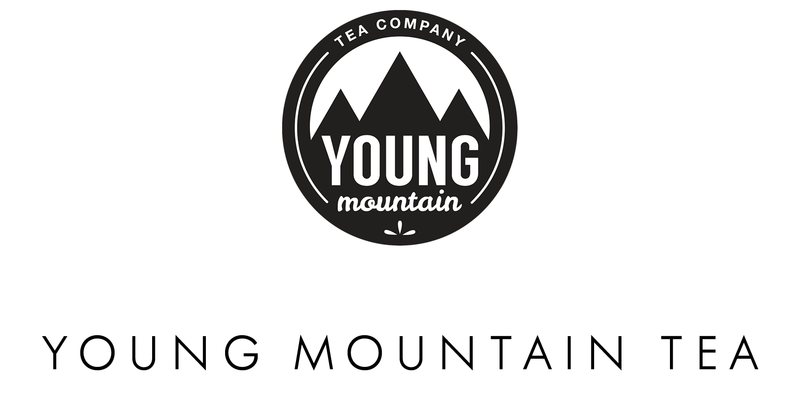Raising Income By Raising Yield

Did you know that tea is a tree? While it's kept at the size of a bush for easy harvesting, some varietals can grow up to 30 feet tall! The leaves from this single tree, scientifically named Camellia sinensis, are processed into the types of tea in our collection, including black, green, matcha, white, and more.
Farmers created the world’s teas by harvesting the youngest part of the plant, known as the iconic "two leaves and a bud." This early growth contains the highest concentration of water-soluble compounds that we humans enjoy so much. So the more farmers can harvest from their bushes (without harming the plant), the more they earn.
However, in Kumaon, we face a challenge – farmers' yield is exceptionally low. Nigel Melican, our consultant with 40+ years experience in tea cultivation on six continents, remarked, "This is the lowest yield I've seen in my life…and you can quote me on that." So, we have a significant hurdle in achieving our ultimate goal of enabling farmers’ earnings to soar.
Thankfully, when you're at the bottom, there's only one direction to go: up. Currently, we're dedicated to figuring out how to increase Kumaon tea farmers' yield to elevate their income.
Tea Growing Around The World
The global average for tea yield is 1,085 lbs made tea/acre/year (referred to as lbs/year). The current maximum is in Kenya, where producers achieved nearly 9,000 lbs/year. However, this is often due to high-input cultivation practices, including synthetic fertilizers, and harvesting lower-quality leaves for tea bag teas.
In the mountains, where cool air slows the tree's growth, and farmers are discerning about harvesting, yield decreases as quality improves. In Darjeeling, the Himalayas' most famous tea origin and growing conditions similar to Kumaon, the average is 580 lbs/year.
In Kumaon, the average right now is 80 lbs/year. Yes, that's right – about 7% of the global average and 14% of Darjeeling. Despite the tea bushes having high-quality leaves grown from prized cultivars, the yield is surprisingly low. Exploring this challenge with a team of experts, we've discovered that factors such as altitude, microclimate, ambient humidity, soil pH, nutrient regime, genotype, and more contribute to the complexity.
The bright side is that this complexity opens the door to numerous small adjustments that can be made. And in the best growing areas, it bumps to almost 250 lbs/year, so there’s potential.
Our Approach To Improving Yield For Tea Farmers
Our on-the-ground partner, Desmond, holds an MS in biochemistry and a lifetime of experience growing all manner of plants on his family's organic farm. Desmond's deep local knowledge combined with Nigel's outside expertise were the building blocks of the plan, and the two were able to bridge their experience gaps, connected by their love of science. We came up with a four-point plan:
1. REVIEW EXISTING LITERATURE ON INCREASING YIELD: With thousands of years of tea cultivation worldwide, including insights from India's Tea Research Association, we (translation: Nigel) explored existing knowledge, with a tight focus on regions that had relevant focus to our work.
2. COLLECT LOCAL HISTORIC DATA: The state government kept records on rainfall, previous tea bush yields, soil analyses, and more. One of the fun moments was when Desmond had to write to the government requesting these records; I had a swell of pride reading his letter on our new letterhead, requesting this in service to a stronger future for all tea farmers.
3. CONDUCT BASELINE STUDIES OF SOIL & LIVING TEA PLANTS: There are two common ways to assess a tea bush's health—analyzing what’s in the soil and what's in its leaves. It took us several months before we could find labs that matched our requirements. At the time of writing this blog in January, the soil samples were finally being analyzed. We’ll look into analyzing living tea bushes in April, once the tea plants are out of their winter dormancy and back in “growing mode.”
4. COMPLETE IN-PERSON ANALYSIS: Last November, Nigel, Lucas, and I visited Kumaon. While Desmond and I spent time waiting for a bank manager, the two of them traveled to 12 different tea growing sites, talking to farmers, measuring soil depths, and digging into the soils. One of the more interesting practices is to measure the starch content of the roots, where I learned that starch is for plants what fat is for humans; a place to store energy reserves. Since the tea plants were asleep for the winter, testing their starch content gave a good snapshot into how healthy they were. 7 of the 9 passed the test, and the remaining 2 were borderline. Signs of hope!
How High Is Up?
At the beginning of our trip in November to Kumaon, I asked Nigel where we should be setting our goal for farmer’s yield. He gave me his quiet knowing smile and asked “How high is up?” As is often the case with Nigel, I couldn’t tell if he was being philosophical, making fun of me, or just being British. Most likely a mix of all three.
The second time I asked him was on the car ride out of the mountains and back to Delhi. Then, he thought it’d be realistic to imagine we can reach Darjeeling levels. This won’t be overnight, but there’s low-hanging fruit farmers could implement right away, such as: stopping tilling practices that destroy surface-level feeder roots; applying heavy mulches; and in-filling openings in the tea gardens with seed-grown tea.
We’re also working to provide the government with long-term recommendations that they can implement across the state (which was the agreement for getting access to the rainfall records). In addition, we’re developing a test plot to show the impact of best practices, so farmers can see for themselves, just how high “up” really is.
Even marginal improvements could have major benefits for farmers' income. As we continue investigating the Case of the Low Kumaon Tea Yield, we're sure to discover insights that will reshape our path. But what an exciting path it is to walk!








Comments on this post (1)
Raj! Love your Blog. You have been presented with quite a challenge of low yields. Fascinating work you are doing in sleuthing out the causes and figuring out how to make changes that can improve the health of the plants. I will be looking forward to the updates and I will throw some healthy plant energy into the air in hopes it can make it to India. Also, it was great to see Lucas looking healthy and happy. PLease say hi to him for me.
— Barbara Anderson